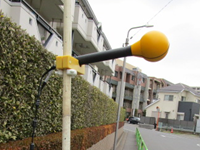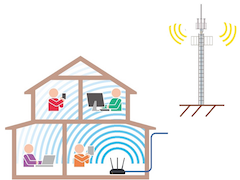
Electromagnetic Field (EMF) Exposure Level Monitoring Project
We are surrounded by a variety of apparatus that use radio waves, also called Electromagnetic Fields (EMF), for example, mobile phones, mobile phone base stations, and wireless LANs. The EMF from the apparatus are utilized under the condition where there is no adverse health effect to human bodies in accordance with the Japanese Radio Wave Protection Guidelines. On the other hand, although EMF are definitely present in our surroundings, we cannot directly capture how strong they are because they are invisible. Therefore, it is important to comprehensively grasp the strength of EMF from various sources, accumulate data, and widely share information of EMF exposure levels. In response to the above needs, the Electromagnetic Environment Laboratory have conducted large-scale, long-term measurements of EMF exposure levels since FY2019, which is the first study by the national research institute with measurement techniques for the radio wave environment in Japan. By combining measurements using electric field probes, measurements by personal portable exposure meters, and wide-area measurements using antennas mounted on a car rooftop (so called car-mounted measurements), we obtain large-scale and detailed data on EMF exposure levels with minimal bias in the data.
EMF Exposure Level Monitoring

